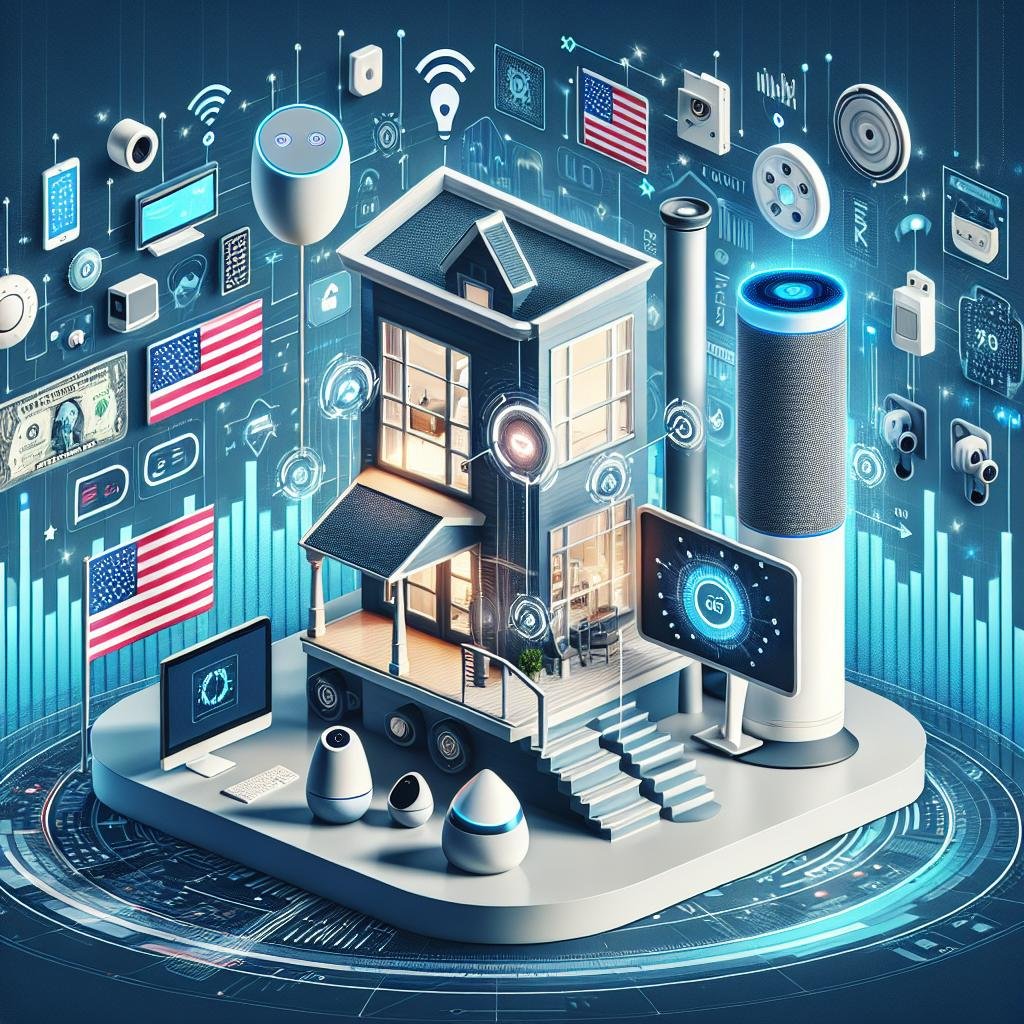
How US Tariffs Impact the Smart Home Industry
The Smart Home industry is evolving rapidly, turning regular houses into intelligent, connected spaces. From smart lighting and security systems to AI-powered assistants, home automation is making life more convenient than ever.
However, for those in the business of smart home installations, new US tariffs on imported goods can present financial and operational challenges. Increased costs on key components like sensors, processors, and networking devices could impact product pricing and availability.
Understanding how to navigate these tariffs effectively can help smart home professionals and DIY enthusiasts continue to build high-quality home automation solutions without breaking the bank. Below are three smart strategies to manage these changes efficiently.
- Präzise Luftfeuchtigkeit, besserer Komfort: Mit dem intelligenten Luftbefeuchter für das Schlafzimmer von Dreo können Si…
- Sprach- und App-Steuerung: Einfaches Anpassen von Einstellungen wie Nebelniveau, Timer und Umgebungslicht über Alexa ode…
- Größerer Nebel, schnellere Linderung: Dank des Dual-Intake-Designs von Dreo erzeugt dieser Luftbefeuchter einen supergro…
1. Diversify Your Supplier Network
One of the best ways to mitigate the impact of tariffs is by broadening your sourcing options. Relying on a single supplier or country for essential smart home products can make your business vulnerable to sudden cost increases.
Explore Local and Alternative Suppliers
Instead of depending solely on foreign manufacturers, consider exploring domestic suppliers or alternative international markets. Countries like India, Vietnam, and Mexico are expanding their technology manufacturing capabilities, providing smart home businesses with more sourcing options.
Negotiate Bulk Purchasing Deals
If switching suppliers isn’t an option, negotiating bulk purchasing agreements with your current vendors can help lower costs. Many manufacturers offer discounted rates for bulk orders, allowing you to maintain your profit margins while shielding customers from price hikes.
2. Optimize Product Selection and Pricing
Choosing the right products and pricing strategies is crucial in navigating tariff-related cost increases. By analyzing trends and consumer behavior, smart home professionals can make informed purchasing and pricing decisions.
Prioritize Essential Smart Home Devices
Focus on stocking high-demand products such as smart thermostats, security cameras, and smart lighting. These items are often considered must-haves in home automation, meaning customers are more likely to invest in them even if prices slightly increase.
Introduce Cost-Effective Alternatives
To accommodate budget-conscious homeowners, source budget-friendly alternatives that maintain quality without excessive costs. Many smart home brands now offer affordable versions of high-end products, ensuring accessibility without compromising functionality.
- Live Steam from Anywhere with Pan/Tilt: Sharp and clear 1080p Full HD provides high quality video right in the palm of y…
- Real-Time Motion/Sound Detection: Get alerts on your smart phone whenever motion or sound is detected even at night (30f…
- Smart Actions: As one of the most user-friendly security cameras, EC70 provides you a way to set your lights to turn on …
3. Stay Updated on Policy Changes
Government policies and tariffs are constantly evolving, making it essential to stay informed. Regular updates on trade regulations can help smart home businesses adapt proactively rather than reactively.
Follow Industry News and Trade Agreements
Subscribe to industry newsletters, attend trade events, and follow relevant government announcements to stay ahead of policy changes. Organizations like the Consumer Technology Association (CTA) provide valuable insights into evolving trade policies affecting the smart home market.
Consult with Trade Experts
Working with trade advisors or legal experts specializing in import regulations can help you navigate tariff complexities. These professionals can guide you on optimizing supply chains, reducing costs, and identifying potential tax exemptions.
Final Thoughts: Future-Proof Your Smart Home Business
While US tariffs present challenges, they also offer an opportunity for smart home professionals to rethink sourcing strategies, optimize product offerings, and stay informed on evolving trade policies.
By diversifying suppliers, optimizing pricing, and keeping up with market changes, businesses can continue delivering cutting-edge smart home solutions without a dramatic increase in costs.
For more insights into the smart home industry, explore our latest guides on automation trends, product reviews, and installation tips. Stay ahead of the curve and create smarter, more connected homes with confidence!
- Musik-Synchronisation: Wenn Ihr Telefon die Umgebung erkennt (aktivieren Sie die Mikrofonerlaubnis auf Ihrem Telefon), ä…
- Millionen von Farben: Der Govee RGBWW Strahler hat mehr als 16 Millionen lebendige Farben und 30 voreingestellte Szenenm…
- Intelligente Steuerung: Intelligente Alexa Scheinwerfer ermöglichen es Ihnen, die Glühbirne mit einfachen Sprachbefehlen…


